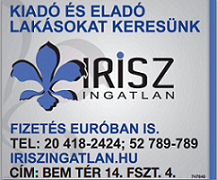Today the Commission published its proposal setting out catch limits for fish stocks in the Atlantic and the North Sea. Based on this proposal, EU fisheries ministers will set the final catch limits at the Council on 15-16 December, to apply as of 1 January 2021.
For 2021, the European Commission presents a proposal with 23 Total Allowable Catches (TACs). Following scientific advice, the Commission proposes for 13 stocks to decrease the fishing quota, while increasing it for horse mackerel in the Iberian waters and sole in Kattegat by 5% and 12% respectively. The fishing opportunities, or Total Allowable Catches (TACs), are quotas set for most of Europe’s commercial fish stocks in order to keep them in a healthy status or help them return to it, while guaranteeing the wellbeing of fishermen and women. Under the Common Fisheries Policy (CFP), the EU Member States are legally bound to manage fish stocks at sustainable levels.
Virginijus Sinkevičius, Commissioner for Environment, Oceans and Fisheries, said: “Today’s proposal shows our commitment to preserving biodiversity at sea, which is the basis for our coastal communities to thrive. Scientists are telling us to set lower catch limits for many of our stocks, and we are following this advice. Setting responsible catch limits will keep our ecosystems healthy and our fishing sector profitable, even in the face of short-term cuts. This is our guiding principle also in negotiations with our international partners.”
Further details of the proposal
Four TACs are delegated to a Member State, and four do not follow the calendar year (e.g. anchovy, sprat) and are already set until June 2021 or await scientific advice next year.
The Commission also proposes to continue existing safeguard measures to ensure that the amount of cod in Kattegat recovers to safe levels. Following the advice received by the International Council for the Exploration of the Sea (ICES) that no targeted fishery should take place for this stock, the Commission will set a fishing quota for by-catches only. Fishers in the area must use selective gears that reduce or avoid cod by-catches, or electronic monitoring to prevent illegal discards.
Today’s proposal also covers the Total Allowable Catches that will be decided in cooperation with non-EU countries, such as the United Kingdom and Norway, or through Regional Fisheries Management Organisations (RFMOs). International consultations for many of these stocks are still ongoing, as are the negotiations of the future EU-UK partnership, including on fisheries, and therefore the respective TACs are put as pro memoria awaiting the outcome of negotiations.
Sustainable fishing has made substantial progress in the EU. In 2020, 62 out of 78 TACs are set at a level that allows a healthy future for the fish stocks’ biomass, while taking into account socio-economic factors (“maximum sustainable yield” (MSY), compared to only 5 out of 35 in 2009. Despite reduced fishing activity during the first months of the coronavirus pandemic, preliminary results show that the sector remains profitable, with estimated gross profits expected to reach 1.5 billion EUR in 2020.
The Commission proposal bases itself on scientific advice from the International Council for the Exploration of the Sea (ICES). For stocks with a full scientific assessment, the Commission is proposing fishing levels in line with maximum sustainable yield (MSY). For stocks where less data is available, the Commission bases itself on the ICES’ precautionary advice. In cases where the International Council for the Exploration of the Sea advises no catches, the Commission either proposes a small fishing quota for a scientific fishery to ensure continued data collection, or limits the fishing to by-catches. In line with the provisions of the Common Fisheries Policy and the applicable multiannual management plans, this helps to avoid “choke” situations so that fishermen and women can continue targeting the healthy stocks.
ec.europa.eu
pixabay

















